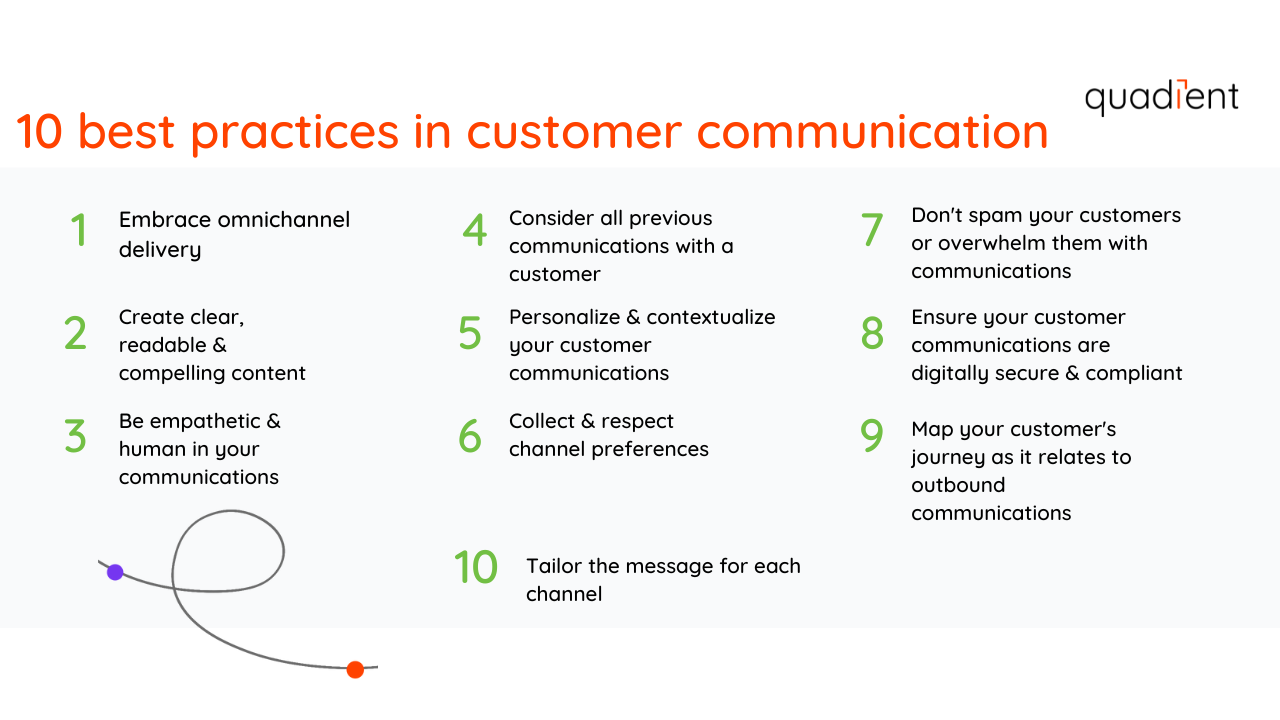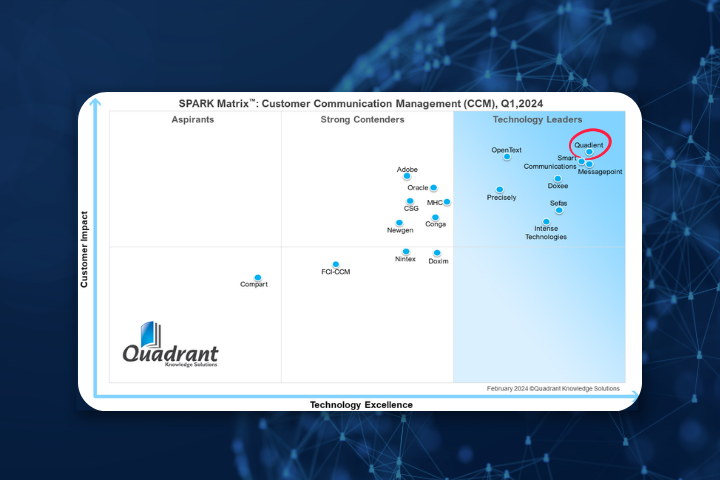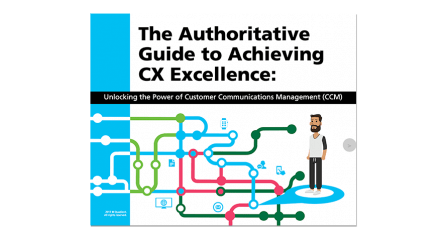Introduction
When it comes to customer experience (CX) strategy, customer communications are one of the most critical components of the customer journey. CX strategy often focuses on frontline communications: training and coaching employees regularly on how to best speak and interact with customers. Your customer communications are equally important. They must be streamlined, consistent, clear, and relevant wherever they’re delivered along the journey.
Why is customer communication management important?
Customer communication management (CCM) is the practice of building and maintaining customer relationships via customer communications.
A comprehensive CCM strategy benefits businesses in the following ways:
- Centralized CCM platforms enable real-time, cross-channel, interactive communications that dramatically improve the customer experience via personalization and channel preference, interactivity, consistency and convenience.
- A centralized approach to creating and delivering communications for all channels improves efficiency by enabling business users to manage content and eliminate operational and digital silos.
- Speeds digital transformation by integrating with core systems to leverage existing templates and data to create personalized, relevant communications.
- Integrates compliance into the design of customer communications thereby reducing risk.
10 best practices in customer communication
Done well, CCM requires the combination of people, process and technology to facilitate the transmission of information between a company and its customers.
Here are 10 customer communication best practices recommended by experts.

1. Embrace omnichannel delivery
An omnichannel communication strategy enables companies to send consistent, centrally managed communications across all channels. This results in a universal customer experience regardless of the channel the customer chooses to engage with the business on. Consistent messaging builds trust and trust keeps customers coming back.
Talk to your customers to find out what channels they use and make sure to support every one of those channels.
2. Create clear, readable and compelling content
Ensure content is concise, clear and easy for customers to understand.
Content that is easy to understand:
- Written in carefully selected words and uncomplicated phrasing
- Avoids the use of industry jargon
- It is conveyed in a way that considers the authority, state and relevance of the reader
- It is succinct and brief
3. Be empathetic and human in your communications
A new human-centric era has emerged due to the COVID-19 pandemic. After months spent isolated from family and friends in lockdown, the value of personal connections has increased. Customers now expect the human element to be integrated into every stage of the customer experience.
Machine-like, mass marketing and generic communications are now viewed as an annoyance. Consumers want to be individually understood and personally recognized— they want to do business with organizations that values their patronage.
4. Consider all previous communications with a customer
Ensure that your CCM is able to track all communications sent via all channels to a customer. Customers expect that you remember previous interactions they had with you. This is important because if for example you were to send an email asking customers to recommend your products and services, you’d want to avoid sending it to a customer who recently sent you a complaint.
5. Personalize and contextualize your customer communications
Organizations like banks and insurance companies have a trove of customer data that can be leveraged to engage in a highly contextualized manner.
All customer communications should be personalized, taking the customer’s order history and previous interactions into account.
A word of caution – personalization can sometimes seem “creepy”. For example, when a business tracks a customer’s online activity on the organization's website. Inmoment, a customer experience management company, found that 75 percent of respondents to a 2018 survey they conducted (2018 CX Trends Report) said that they consider most forms of personalization to be at least somewhat “creepy”.
6. Collect and respect channel preferences
Ask your customers what types of communications they wish to receive from your organization and on which channels they wish to receive them and respect those preferences with every communication.
7. Don’t spam your customers or overwhelm them with communications
No one likes spam emails. Make sure that every communication you send to a customer is necessary and relevant.
Consider how many touchpoints you have with customers in a day or week. Don't overwhelm them with communications via different channels or they may opt out of receiving messages from you.
8. Ensure your customer communications are digitally secure and compliant
This is particularly important in industries like financial services, healthcare and insurance where regulations prescribe specific levels of security.
These same industries have various regulations to contend with. Reduce compliance risk with a centralized CCM application that provides compliance staff with the ability to manage, track, audit, and approve regulatory language quickly and easily.
9. Map your customer’s journey as it relates to outbound communications
When companies map their customers’ journey, outbound customer communications are often overlooked. Customer communications must be streamlined, consistent, clear and relevant wherever they’re delivered along the journey.
It’s crucial to capture customer communications in your journey maps as they are often a key moment of truth for your customers. For example, if there are miscommunications, such as “I couldn’t make sense of my bill,” then the experience is negatively impacted. And that impacts you in the form of increased call volume and decreased customer satisfaction, potentially increasing customer churn.
Customer journey mapping helps ensure that you’re aware of where and how to best deliver these communications and to ensure that they not only meet the needs of the customer but also remain consistent with the brand promise.
10. Tailor the message for each channel
Make sure to tailor the message for each channel, since your customers use various channels in different ways. Tweets need to be short and concise. Emails can be longer and more detailed. SMS can be more casual.
Conclusion
As you can see, there are many factors to consider when optimizing customer communications. If you keep these best practices in mind and iterate to improve your customer communication practices over time, you’ll be able to build trust and loyalty with your customers.










